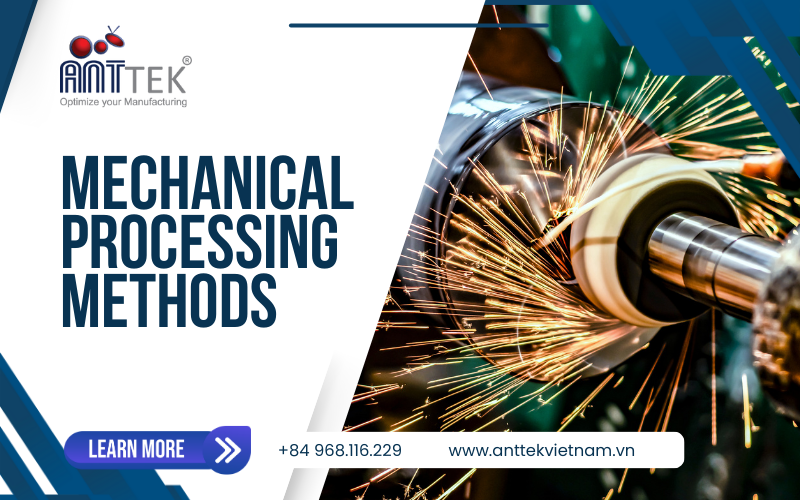Computer Numerical Control (CNC) machining has revolutionized manufacturing, offering precision, efficiency, and repeatability in the production of intricate parts and components. However, like any advanced technology, CNC machining has challenges. Understanding and addressing common CNC machining errors is crucial for achieving optimal results and minimizing waste. In this article, we’ll explore some prevalent errors encountered in CNC machining and discuss strategies to identify and mitigate them.
Common CNC machining errors
Incorrect Tool Selection
One of the fundamental errors in CNC machining is selecting the wrong tool for the job. This can result in poor surface finishes, excessive tool wear, and, in some cases, damage to the workpiece. Machinists must carefully consider factors such as material type, cutting speeds, and feeds when choosing the appropriate tool for a specific application.
Incorrect Programming Errors
Programming errors are a significant cause of CNC machining errors. Dimensional inaccuracies and programming logic errors can lead to scrapped parts and wasted time. It is essential to thoroughly review and simulate CNC programs before implementation. Modern CAM software provides simulation tools to visualize the machining process and detect potential errors.
Toolpath Errors
Errors in the toolpath programming can have a significant impact on the final product. Issues such as incorrect toolpath geometry, improper tool entry, and exit points, or abrupt changes in direction can result in uneven cutting and compromise the quality of the machined part. Thoroughly simulating and verifying toolpath before machining can help identify and rectify these errors.
Inaccurate Workpiece Measurement
Failing to measure and verify the dimensions of the workpiece accurately can lead to costly errors. Machinists must use precise measuring instruments and regularly check the dimensions of the workpiece during and after the machining process to ensure that it meets the required specifications.
Tool Wear and Dull Cutting Tools
Overlooking tool wear is a common oversight that can adversely affect machining. Dull cutting tools result in increased cutting forces, poor surface finishes, and reduced overall efficiency. Implementing a proactive tool maintenance and replacement schedule is essential to prevent these issues and maintain consistent machining quality.
Coolant and Lubrication Issues
Inadequate coolant flow or lubrication can contribute to overheating, chip welding, and poor chip evacuation during machining. Maintaining the proper levels of coolant and ensuring that it is effectively reaching the cutting area are critical factors in preventing thermal damage to the tool and workpiece.
Mastering Solutions for Common CNC Machining Errors
Addressing common CNC machining errors is essential to ensure the production of high-quality components. Here are strategies to fix some of the most prevalent CNC machining errors:
Incorrect Tool Selection
- Solution: Review the material specifications and machining requirements. Consult tool catalogs and databases to select the appropriate tool for the job.
- Prevention: Establish a comprehensive tool selection process based on material properties, cutting speeds, and feeds. Regularly update tooling knowledge to stay current with advancements.
Incorrect Programming Errors
- Solution: Utilize CNC simulation software and debugging tools to step through the program line by line. This allows for real-time visualization and identification of errors.
- Prevention: Integrate regular training on debugging tools into the programming team’s skill development program.
Poor Fixturing and Workholding
- Solution: Enhance or redesign fixtures to ensure secure workpiece clamping. Consider alternative workholding solutions such as vacuum tables, magnetic clamps, or custom fixtures.
- Prevention: Prioritize fixture design during the planning phase. Regularly inspect and maintain fixtures to address wear and tear.
Toolpath Errors
- Solution: Use simulation software to verify and optimize the toolpath before actual machining. Debug errors in the program and retest.
- Prevention: Implement a rigorous programming and simulation process. Conduct thorough reviews of toolpaths with input from experienced machinists.
Inaccurate Workpiece Measurement
- Solution: Invest in high-precision measuring instruments. Perform regular checks during the machining process and adjust offsets as necessary.
- Prevention: Establish a standardized measurement protocol. Calibrate measuring equipment regularly and document measurement results for future reference.
Tool Wear and Dull Cutting Tools
- Solution: Implement a proactive tool maintenance schedule. Monitor tool wear during machining and replace tools according to predetermined criteria.
- Prevention: Set up a tool life monitoring system. Regularly inspect and measure tool wear, and adjust cutting parameters accordingly.
Coolant and Lubrication Issues
- Solution: Verify coolant flow and adjust settings to ensure proper coverage. Clean or replace filters, and monitor coolant levels regularly.
- Prevention: Develop a routine maintenance schedule for coolant systems. Train operators on the importance of proper coolant management.
Anttek Vietnam – Prestigious and quality CNC processing unit
Anttek Vietnam is proud to be a leading CNC designer and machinist, providing high-quality and reliable products to customers. With many years of experience in the field of jig design and processing, Anttek Vietnam has been a reliable partner of domestic and foreign customers.
Contact us now to: IMPROVE PRODUCT QUALITY – OPTIMIZE COSTS – ENSURE DELIVERY SCHEDULE
For details, please contact:
- Address: Lot G07, Kien Hung land use rights auction area, Kien Hung Ward, Ha Dong District, City. Hanoi
- Factory: Lot 6, Lai Xa Industrial Zone, Kim Chung Commune, Hoai Duc District, Hanoi City, Vietnam
- Hotline: (+84) 968.116.229 – (+84) 86.998.2628
- Email: khoi.pd@anttekvietnam.com
- Website: https://anttekvietnam.vn
In CNC machining, precision and attention to detail are paramount. By addressing and mitigating common errors, machinists can enhance the quality of their products, reduce waste, and optimize the efficiency of the machining process. Regular training, proper equipment maintenance, and a commitment to continuous improvement are essential for avoiding these pitfalls and unlocking the full potential of CNC machining technology.








